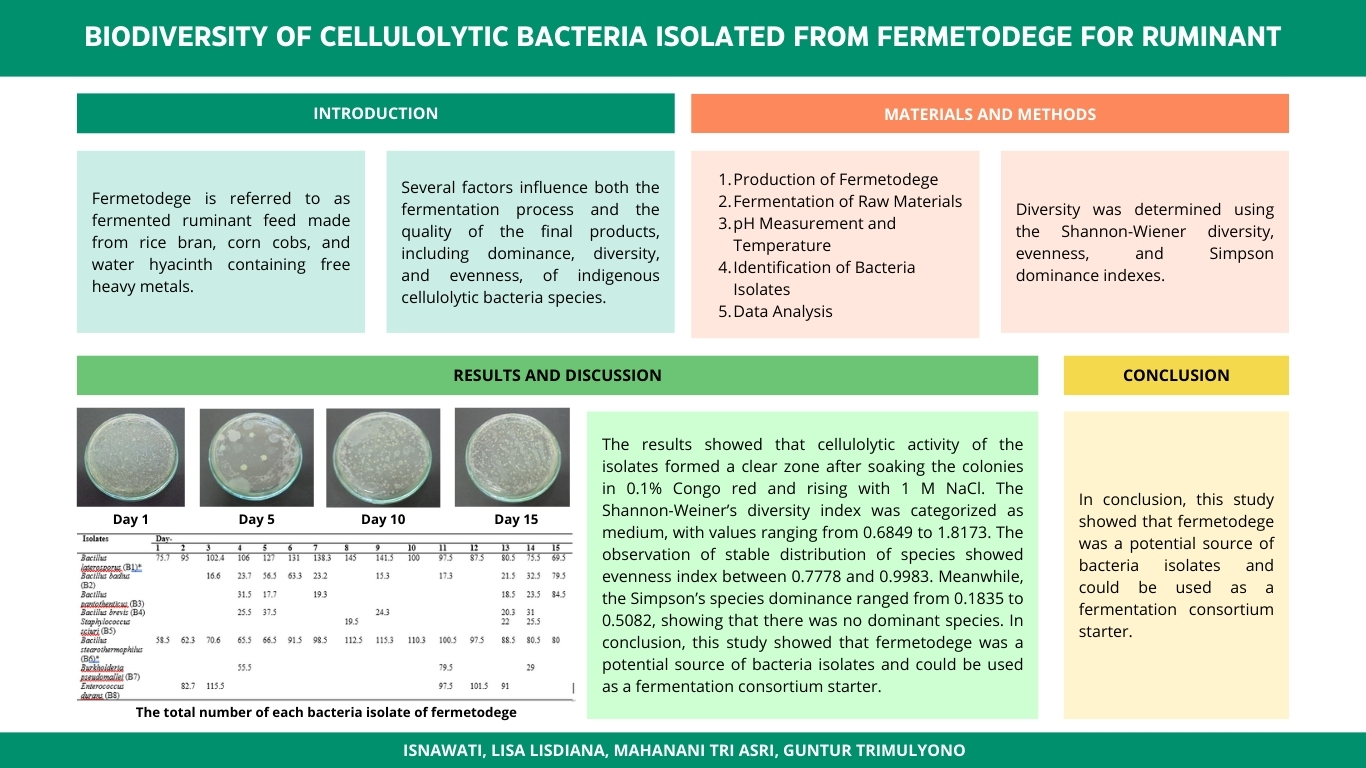DOMINANCE, ASSOCIATION AND DISTRIBUTION PATTERN OF TREE SPECIES IN BURNT FOREST IN EAST KALIMANTAN
Downloads
Repeated forest fires have high impact on species’ composition. Pioneer species colonize the burnt forest and develop widely up to 30 years after a fire but late-succession species regenerate gradually or even disappear owing to direct impact of fires or other ecological consequences related to fires. Forest restoration through assisted natural regeneration needs information about the state of species’ composition after fire. Species’ dominance is a species’ composition indicator used in this research, with additional information on species’ association and distribution patterns, to understand tree species’ composition after repeated fires. A 1.8-hectare plot divided into 10 x 10 m sub-plots was established in secondary forest in Samboja Research Forest, East Kalimantan. The plot sample was burnt in 1982/1983 and 1997/1998. All trees above 10 cm DBH were measured; leaf specimens were collected for species’ identification at the Herbarium Bogoriense, Cibinong, West Java. For comparison, we used 1981 data observed by the Indonesian Institute of Science, published by Kartawinata et al 2008. The Importance Value Index was used in the data analysis to express species’ dominance. A 2x2 matrix based on presence-absence of species for each sub-plot was used to analyse the association index among species. Variance and average value ratio of certain species present in each sub-plot was expressed in a dispersion index. A chi-square was used to test the significance of the association and dispersion index. Thirteen years after a second fire, pioneer species of Macaranga gigantea were most dominant, followed by Vernonia arborea, a sub-climax species. This indicated that the forest was in an early succession process. Pholidocarpus majadun was consistently dominant before and after the fire. We found 38 pairs of species significantly positively associated and 4801 pairs negatively associated. About 60% species’ association, both negatively and positively, occurred between ‘native species’ (species that exist befores burnt) and ‘non-native species’ (new comer species regenerated after burnt) in the plot sample. A non-native species, Vernonia arborea, associated negatively with the non-native species Tabernaemontana sphaerocarpa, and native species, Oncosperma horridum, Palaquium dasyphyllum and Endiandra rubescens. The distribution pattern of four native species—Artocarpus anisophyllus, Cananga odorata, Croton laevifolius and Macaranga gigantea—changed after repeated fires, from uniform to clumped.
Downloads
Copyright (c) 2020 BIOTROPIA - The Southeast Asian Journal of Tropical Biology

This work is licensed under a Creative Commons Attribution-NonCommercial-NoDerivatives 4.0 International License.
Authors who publish with this journal agree with the following terms:
- Authors retain copyright and grant the journal right of first publication, with the work 1 year after publication simultaneously licensed under a Creative Commons attribution-noncommerical-noderivates 4.0 International License that allows others to share, copy and redistribute the work in any medium or format, but only where the use is for non-commercial purposes and an acknowledgement of the work's authorship and initial publication in this journal is mentioned.
- Authors are able to enter into separate, additional contractual arrangements for the non-exclusive distribution of the journal's published version of the work (e.g., post it to an institutional repository or publish it in a book), with an acknowledgement of its initial publication in this journal.
- Authors are permitted and encouraged to post their work online (e.g., in institutional repositories or on their website) prior to and during the submission process, as it can lead to productive exchanges, as well as earlier and greater citation of published work (See The Effect of Open Access).




























